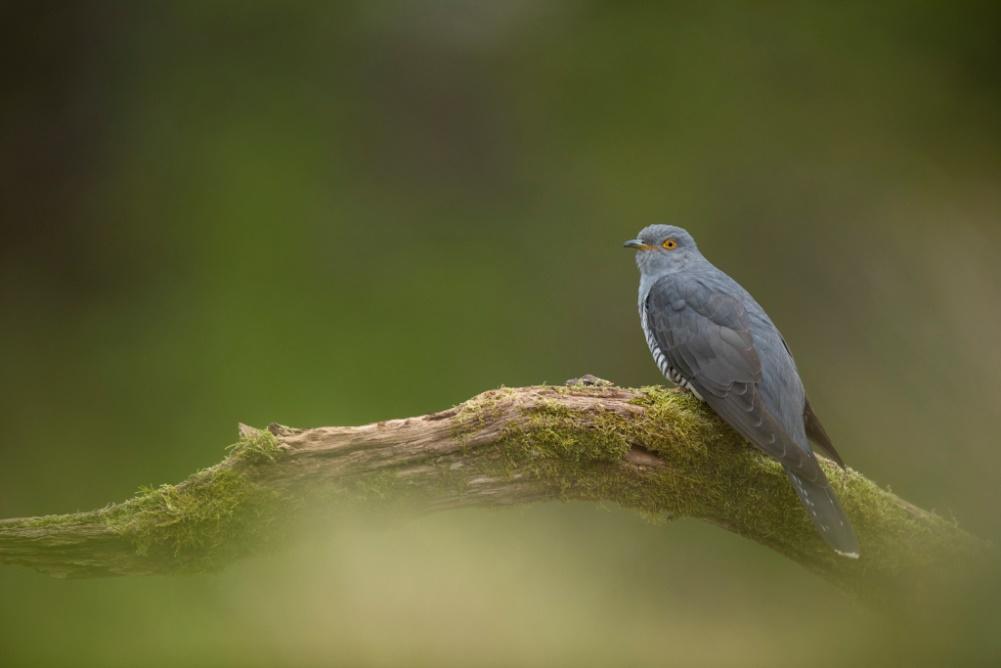Thousands of birds are returning from Africa and more southerly parts of Europe too, to the Humber estuary this month, in the East Riding of Yorkshire, exploiting its food-rich wetlands, reedbeds and mudflats on their way here to breed or to head further north.
The very first Cuckoo has arrived too, just in time for the celebratory World Migration Day (11 May).
This is all part of one of the world’s greatest bird migrations which is happening right now across the Humber and at RSPB Blacktoft Sands as well as at nature reserves positioned along England’s internationally important East Coast Wetlands. This global phenomenon will be celebrated on 11 May, officially recognised as World Migratory Bird Day.
Spring is a time when huge numbers of birds are on the move, travelling thousands of miles along routes from their wintering grounds to their breeding sites, often stopping to refuel along the way. This year’s theme for World Migratory Bird Day will focus on the importance of insects for migratory birds, highlighting concerns about their decreasing populations, which directly threatens bird survival.
Insects are a vital food source for many species which are arriving at RSPB Blacktoft Sands this month, a nutritious food source for Reed Warblers for example, and one of the key reasons birds head to the Humber in their thousands to exploit its food-rich habitats.
This year, the World Migratory Bird Day campaign will stress the need for proactive conservation measures to protect our insects, such as reducing the use of pesticides and fertilisers and switching to nature-friendly farming. At RSPB Blacktoft Sands, at the heart of the Humber, visitors can witness these migratory marvels from dawn till dusk from seven visitor hides, along what is England’s largest intertidal reedbed.
30 different species of birds will be arriving this month and next, including Ringed Plovers and Cuckoos which are red-listed in the UK as birds of the highest conservation concern. Some of the birds arriving are:
Reed Warblers and Cuckoos – arriving May/beginning June.
Reed Warblers
Wintering as far afield as Senegal in West Africa this often-late migrant has already begun arriving earlier than usual, to take advantage of Blacktoft and the wider Humber’s expansive reedbeds. They will expertly weave their nests intertwining them between three or four reed stems ready to support their eggs and young as they develop. They’ll feed their offspring on a variety of insects including flies, moth caterpillars, spiders, and beetles. RSPB Blacktoft Sands and the Humber hosts one of the more northerly colonies of Reed Warblers in the UK but they need food rich habitats along their migration route to feed up with insect ‘fuel’ so they can make it back.
Cuckoos – first one – just arrived – 8 May.
Wintering as far afield as the Congo basin in the central African rainforests, Cuckoos come back through West Africa and join the same migration route as the Reed Warblers. Cuckoos are dependent on the Reed Warblers and will lay eggs in their nests; the host parents then raise the Cuckoo chick. Whilst numbers have declined massively, populations in the UK are doing better where there is good habitat providing their food supply, such as the large hairy caterpillars of butterfly and moth species. So, Blacktoft Sands’ reedbeds provide an important refuge for the Cuckoos, one of the key habitats for this threatened species.
Marsh Harrier – arriving May.
One of Blacktoft Sands’ star species, the Marsh Harrier, is a familiar sight swooping low over the reed beds all year round, as many now winter in the UK. But lots still migrate to Spain or further, as far afield as Senegal and The Gambia, heading back to the British Isles mid to late spring. They are still a rare British bird with only about 550 pairs in the UK. RSPB Blacktoft Sands can see up to 13 breeding pairs in summer. Like all birds of prey when nesting, they need large amounts of prey to feed their young. Voles, birds, rabbits, and amphibians are a great source of food for Marsh Harriers, the largest harrier in the UK.
Ringed Plover – arriving May and early June.
Many Ringed Plovers, on their way to the Northern Tundra, migrate through the Humber from West Africa to their breeding grounds in Scandinavia, Russia, Iceland and even Greenland. They stop off at RSPB Blacktoft Sands in May/early June to feed on the insect rich mud both on the shallow seasonal pools and tidal mudflats. Often after feeding on the Humber their next stopping point will be their breeding sites on the Tundra flying hundreds of miles in the space of a day.
In recognition of their importance, England’s East Coast Wetlands, which are part of the East Atlantic Flyway, were added to the UK’s tentative list for UNESCO World Heritage status in April 2023.
Pete Short, Senior Site Manager, RSPB Blacktoft Sands, said:
“The Humber Estuary is incredibly important for the birds and the insects they come here to feed on. Here on the Yorkshire east coast and along the east coast of England, we’re especially privileged to be a part of one of the world’s eight ‘bird superhighways’, the East Atlantic Flyway.
“This amazing phenomenon of nature is happening right here, right now on Yorkshire’s east coast and we’re seeing a surge in bird migration, as Cuckoos, Reed Warblers, Cuckoos, Ringed Plovers, and Marsh Harriers are arriving at Blacktoft. We’re delighted to support World Migratory Bird Day and help spread the message that we need to do more to conserve the precious habitats on which these birds rely.”
Darren Johnson – Humber Reserves Community Engagement Officer, said:
“Hearing the first Cuckoo back from Africa, listening to Reed Warblers’ rhythmic song or seeing the first Swallows of spring, reminds me of the amazing journeys they have been on to arrive back here in East Yorkshire. Visitors come from right across the UK to visit this hidden gem on East Yorkshire’s coast as it is one of the best places in the country to see these feathered travellers.”
England’s East Coast Wetlands, now on the road to achieving World Heritage status, stretch from the Thames in the south to the Humber in the north. Together they form a network of wetland habitats vital to some of our most vulnerable and iconic species.
This internationally important stretch of English coastline, used by nearly 300 bird species every year, is part of the East Atlantic Flyway. The East Atlantic Flyway is a bird migration route stretching from the Arctic to South Africa, connecting more than 70 countries, including the UK, and used by 90 million birds annually.
International recognition for the importance of the East Coast Wetlands for its migratory birds will help not only in raising the profile of just how special this place is now, but also help in the fight against climate change, and in protecting this precious nature for future generations.
If accepted by UNESCO, the East Coast Wetlands, including East Yorkshire’s very own Blacktoft Sands, could join a list of some of the world’s most iconic natural sites, such as the Great Barrier Reef, the Galapagos Islands and Mount Kilimanjaro.






